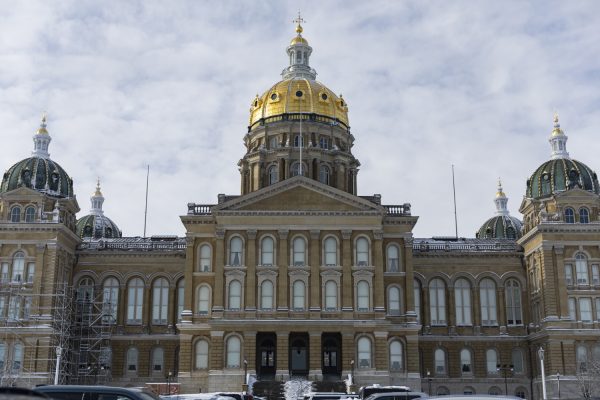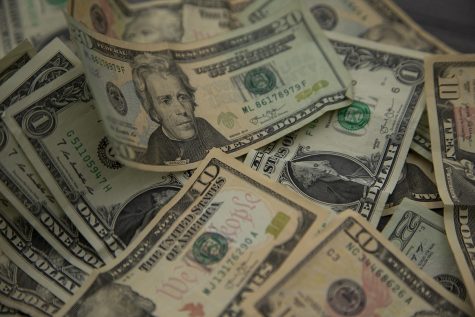Opinion | Farmers need reduced expenses to turn a profit
Farmers have been hit by rising costs from the pandemic and need help funding their expenses.
Farming machinery stands tall next to crop fields on the Meade Family Farm in Tiffin on Tuesday, June 28, 2016. In light of a recent EPA investigation, information has emerged linking the use of atrazine, a common herbicide sprayed across Iowa farm land, with negative health and environmental outcomes.
February 17, 2022
Agriculture is sometimes taken for granted, yet it is one of the few things that needs to be taken seriously. Farmers took a hit from the pandemic and rising costs. Farm production expenses are expected to rise by 1.5 percent in 2022, so many farmers won’t make a profit, or nearly enough to stay afloat.
Agriculture and related industries make up 10.3 percent of U.S. employment, with 1.4 percent coming directly from farming. Profits have decreased over the pandemic years as expenses have come closer to meeting or exceeding sales.
In Iowa, 85 percent of land is used for farming. Iowa leads in crops like corn and soybeans. Iowa and other Midwestern states are the primary suppliers of agriculture in America and the world.
Farmers prepay for the inputs they need in the winter before the next planting in the spring for cheaper costs. Inputs are the products and machines involved to produce or improve a crop. As inputs like nitrogen for corn and round-up/other pesticides prices have doubled, it could possibly put farmers out of business if they don’t at least break even.
When farmers go to sell their grain or livestock, they don’t get to set the prices. They don’t get to say what price they would need to break even.
This has also led to a shift in what farmers are willing to plant. Corn requires more inputs than other crops like soybeans, so farmers in Iowa have started to plant more soybeans in an effort to stay afloat and make money.
One solution is for farmers to have more of a say in their sell prices. Farmers of wheat, maize, and mustard have options, a way to set a predetermined price for a premium.
Farmers of other crops and livestock should be given opportunities such as options to at least break even at the end of the harvest. However, I would recommend the government provide needed funding to farmers.
Bigger farms can easily control the markets on their crops and set higher or lower prices, but smaller farms depend heavily on the money they bring in, as for many it is their only source of income.
While the government has started programs to reduce the economic impact of the pandemic on farmers, like paying the difference in sales because of price reductions, the cost of inputs will continue to rise.
If the government were to subsidize the cost of inputs for farmers, then farmers would not sell their crops as high, meaning restaurants and other businesses could lower their prices as well. This would also allow smaller farmers to have a better cushion to survive other catastrophes such as droughts.
Either way, farmers need more money as they are the backbone of our economy and our lives. Smaller farms need the most help as they continuously battle bigger farms and corporations. Small family farms are also better for the environment and for animals as they are less likely to overuse pesticides or abuse their animals.
At the end of the day, farmers need more control to set their prices and financial aid due to loss from the COVID-19 pandemic.
Columns reflect the opinions of the authors and are not necessarily those of the Editorial Board, The Daily Iowan, or other organizations in which the author may be involved.













